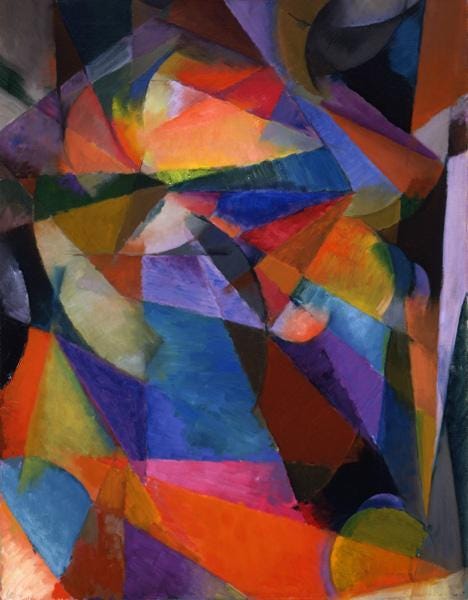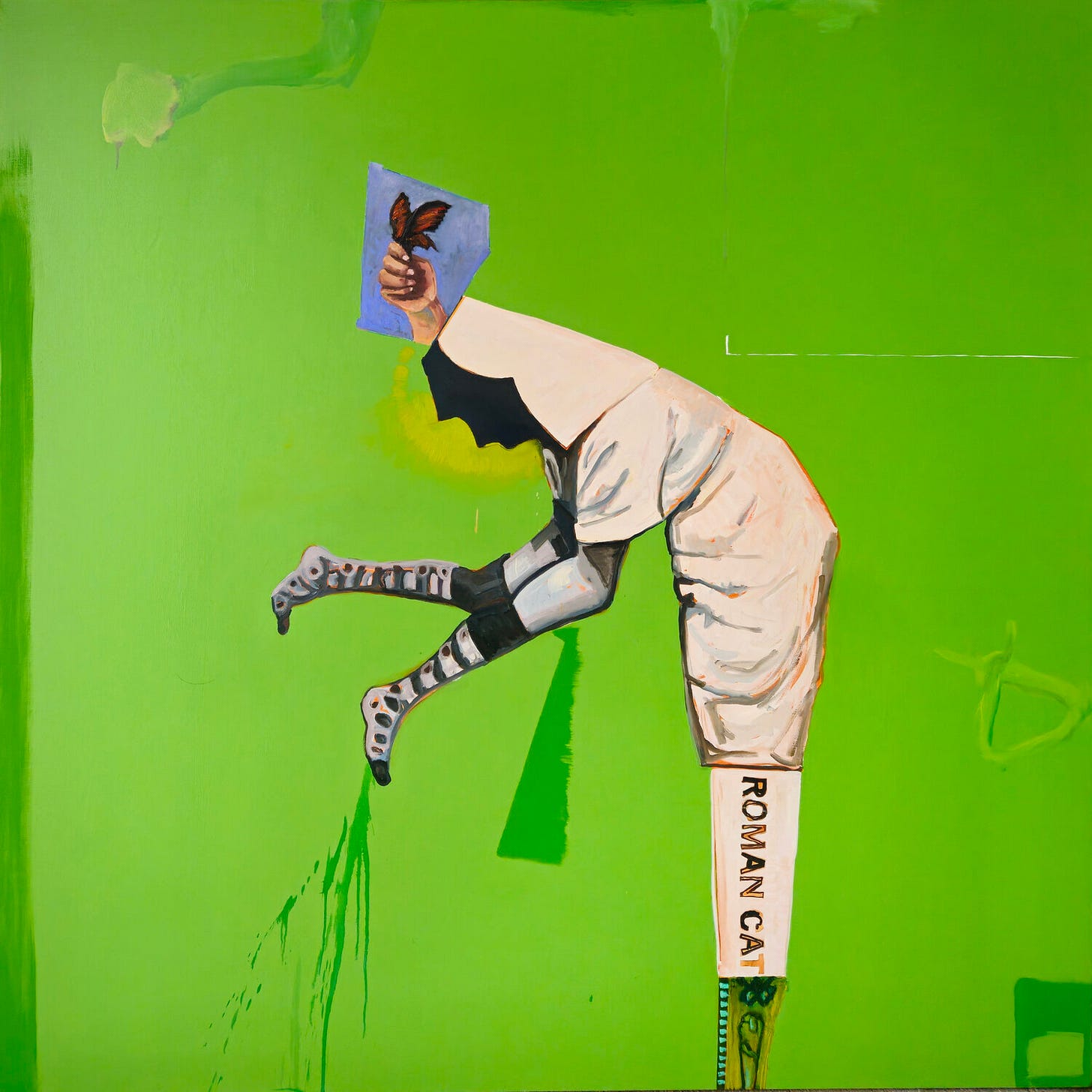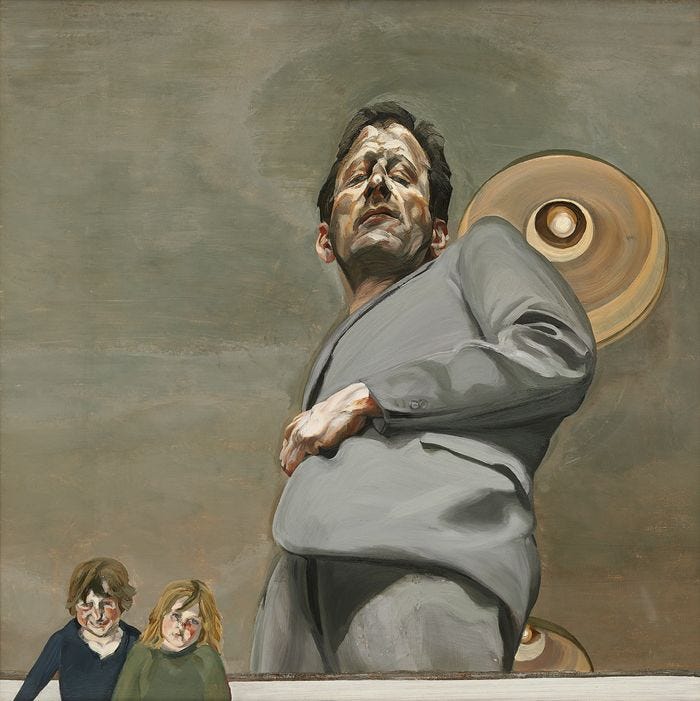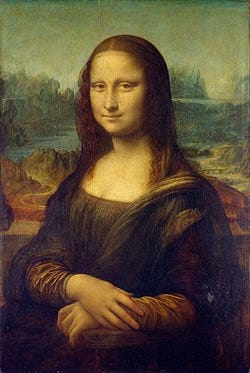Synchromy, Blue-Green, Stanton Macdonald-Wright
“I strive to divest my art of all anecdote and illustrations and to purify it so that the emotions of the spectator can become entirely ‘aesthetic,’ as in listening to music.” –Stanton MacDonald-Wright, 1916 Toledo Museum of Art
Ambiguity in art is when a piece of work has multiple possible interpretations or meanings, or when something is uncertain.
See
I am pretty comfortable with ambiguity in art. There's something stimulating about not having all the answers laid out before me. It draws me in, urging me to seek out my own understanding, even if that understanding evolves over time. The unknown aspects of an artwork are engaging and energizing, and urge me to continually explore and infuse my own experiences into its meaning. My mind thrives on this.
In real life, however, ambiguity about the big things can cause anxiety. When jobs, relationships, health are surrounded by ambiguity, I feel challenged in a way I do not love. Let’s look at some art that is ambiguous. Notice how you feel when you are looking at these pieces.
Look, Describe, Think, Connect
Composition IV (1911) by Wassily Kandinsky
Object, Paris-1936, Méret Oppenheim
“What if rather than being disheartened by the ambiguity, the uncertainty of life, we accepted it and relaxed into it?” -Pema Chödrön
Charity, 2019 by Shelton Walsmith
Boy with a Dog, 2021 by Hanna Ilcyszyn
‘Reflection With Two Children (Self-Portrait)’ (1965), Lucian Freud
Say
There is an irresistible drive in us as humans to define things, people, and experiences we have into categories; clear of ambiguity, mystery, and confusion. Evolutionarily, you could argue this instinct has helped us interpret the world around us in more efficient ways and helped us to avoid potentially dangerous encounters. While this powerful impulse can be helpful in some instances, it most certainly rejects a sense of discovery, curiosity, and tolerance for the unknown and unfamiliar when placed in the context of contemporary social order.
Lisa Krannichfeld, Artist
Choose one piece from the selection that stimulates you. Are you compelled to define or play with ideas about what it might mean? Articulate the feelings that come to you as you look at this work. Does it attract you or repel you? Is it both?
Mona Lisa by Leonardo da Vinci is probably the most recognizable artwork in the world. Discuss how ambiguity in this image keeps it front and center centuries after its creation.
How might experiencing ambiguity in art help us grapple with our real life ambiguity and the struggles that come with it?
What kinds of ambiguity are you ok with? Which cause anxiety or worry?
Do
Listen to Steve Martin as he discusses the way this ambiguous painting is reinterpreted through multiple viewings.
Create an artwork and intentionally leave some aspect of it ambiguous.
Try using this guide from The Museum of Fine Arts in Houston to practice looking at challenging artworks.
The conflict of two things being true at once can cause unease in art, but in life is a lot more consequential. Read about Ambiguous loss and why we should acknowledge it.
Read The Fundamental Ambiguity of Being Human, How to live beautifully with uncertainty and change by Pema Chödrön
Join Wonder Mob, a community of ‘wonderers’ like you! MN Readers, sign up for summer camps and classes! Please share your reflections with me by replying to this post, or post and tag my Wonder Wander Facebook or Instagram pages!










